|
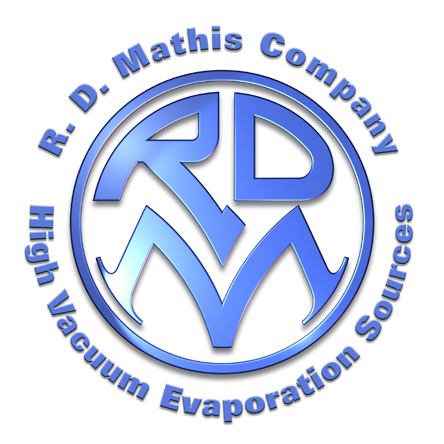
The R.D.
Mathis Company
specializes in the fabrication of high vacuum evaporation sources for
thin film
coating industries. We offer a comprehensive selection of tungsten,
molybdenum
and tantalum sources through our catalog and offer custom fabrication to
meet
your specific coating needs. Our "LV Series" Low Voltage, High
Current Power Supplies and "GP 100" Inert Gas Purifier compliment
your evaporation process. Contact: www.rdmathis.com 562-426-7049
|
|
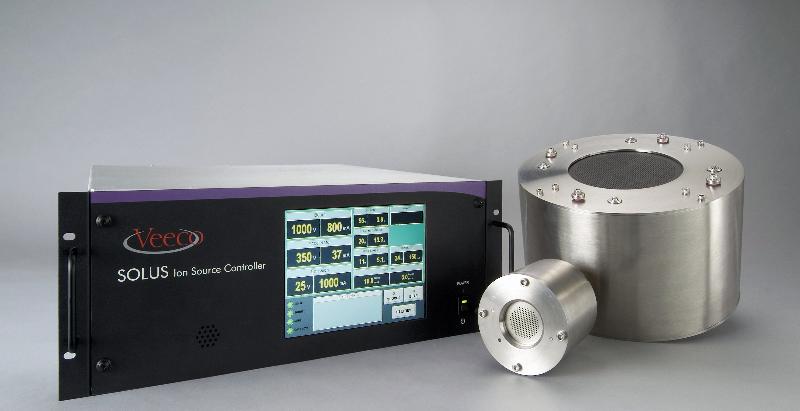
Veeco's
new SOLUS™ DC Ion Source Controller features a state-of-the-art precision control system
design providing reliable and stable power for ion source operation in
all
types of processes. Integrated
power modules and gas flow control with ratio capabilities allow for
optimal
ion source control and performance in the most demanding process
environments.
To Learn More Visit: www.veeco.com/SOLUS 970-221-1807 |
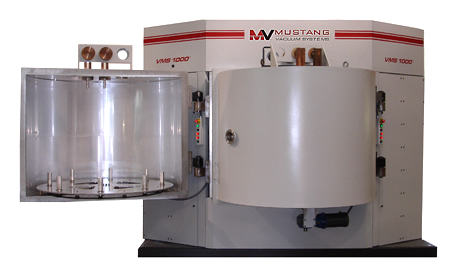
Mustang Vacuum Systems
Vertical
Metallization System VMS 1000 - VMS 1500 Dual door batch evaporation
systems with patented PLASCOAT in chamber top coat. Fastest cycle time
available at 12-18 minutes with options of either 6-8 planetary configurations
of 430mm - 540mm in diameter provide maximum flexibility.
Visit Us:
www.mustangvac.com E-Mail Us: inquiries@mustangvac.com |
|

Solid
Sealing Technology specializes in the design and manufacture of
highly engineered hermetic products using metalizing, brazing,
glass-ceramic sealing, welding, and critical assembly. SST
manufactures industry standard and custom designed Vacuum Feedthroughs,
Coaxial Connectors, Multi-Pin Connectors, Thermocouples, and Isolators
for high temperature, UHV, and high pressure applications.
Contact:
Ph: 518-874-3600
Fax:
518-874-3610
info@solidsealing.com
|
Pfeiffer Vacuum's CombiLine™ Industrial Roots Pumping Stations are used in pressure ranges from atmosphere to high vacuum. CombiLine(TM) is a combination of Roots pump/s and components such as: rotary vane, turbo, dry, liquid ring, cryo and diffusion pumps, gauges, analytical equipment, control systems and bus connections.
Contact
combiline@pfeiffer-vacuum.com,
www.pfeiffer-vacuum.com or 603-578-6500. |
Roll-Coating System
Ulvac's SPW-030 roll-coating system, designed for R&D and Pilot-scale production, is capable of processing a 300 mm-wide web of various substrate compositions including thin-gauge metal rolls and a variety of polymeric materials. The coating system can be equipped with up to four (4) sputtering cathodes and an electron beam evaporation source for depositing materials of varying compositions.
|
CPMX6000 Automatic Tuning Network for
Impedance Matching
Comdel's new CPMX6000
system is engineered with Comdel's unique PROTRAK, a high-speed tuning
algorithm that gradually slows the system as it approaches the tuning point,
allowing a precise match even in high "Q" loads. The CPMX6000
delivers a 75A load current and features automatic and manual modes with local
and remote manual control of tuning capacitors.
Learn more.
Comdel
11 Kondelin Road
Gloucester, MA 01930
Tel: 978-282-0620 or 800-468-3144
Fax: 978-282-4980
E-Mail: info@comdel.com
|
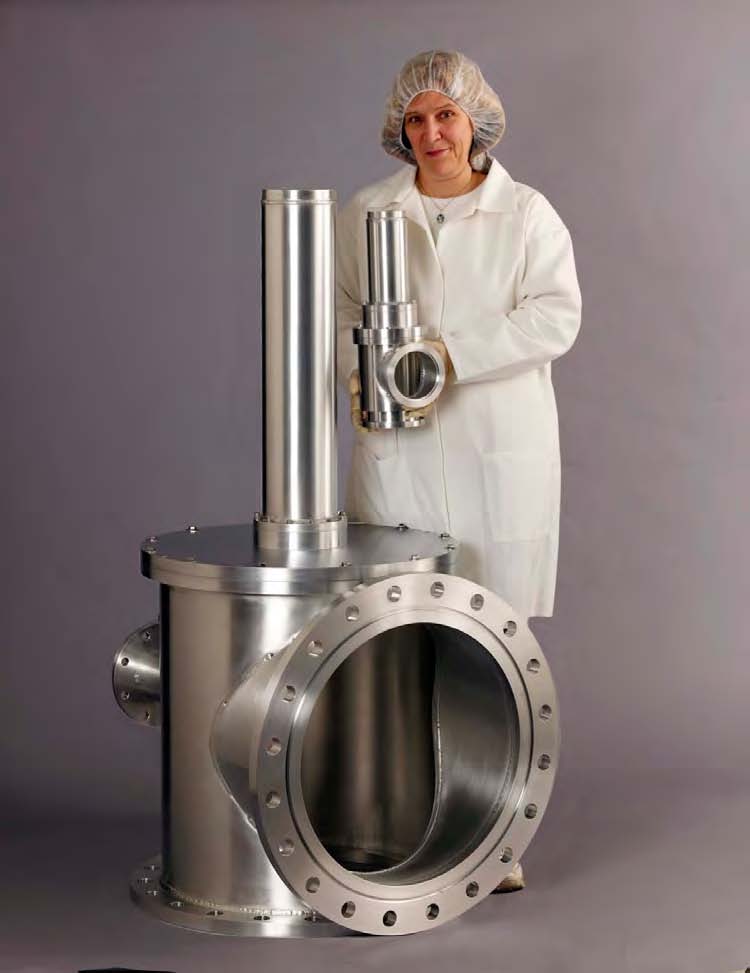
Steel and Aluminum High Vacuum Poppet Valves
Aluminum, Stainless or Mild
Steel Valves with flanges to match
diffusion & Cryo pumps. Electroless nickel optional on steel valves.
High
conductance full opening port. Leak tested to better than 5 X 10-10
scc/sec.
RoHS compliant and CE marked. Phone: 800-426-9340 Web: www.vacuumresearch.com Email: vrc@vacuumresearch.com
|
|
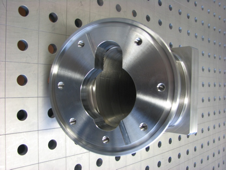
MEWASA
has expanded the manufacturing possibilities of its
bellows production, allowing the manufacture of bellows up to 1100mm in
diameter.
Combined with the modern PC-based control, our machine provides the
flexibility
to weld arbitrary bellows profiles, including oval shaped bellows with
inside
dimensions of 66.7 to 117.5mm. MEWASA
has widened its capabilities, offering greater design solutions to meet
your engineering
applications, whether it is larger dimensions or different profile
shapes.
Contact: Ira Miller, General Manager,
Mewasa North America
i.miller@mewasa.ch Tel: 520-797-6980
|
|
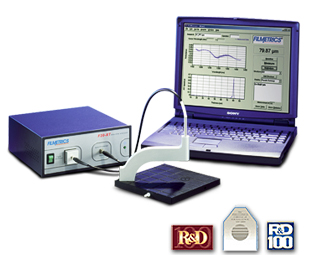
Filmetrics
Thin-Film Thickness Measurement Systems
-Measure thickness
from 1nm to 1mm
-Measure
refractive index and other properties
-Used in thousands
of applications worldwide
We offer the
industry's only complete line of thin-film
measurement
instruments. With our 24-hour online
"Hands On" support, expert help is only a
minute away.
Contact:
www.filmetrics.com
858-573-9300
|
|
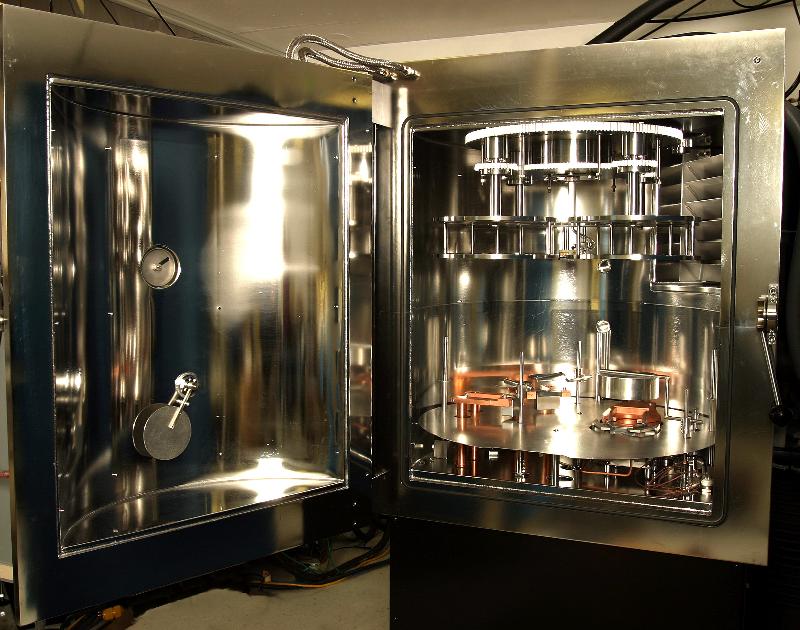
Dynavac's 1-meter Optical
Coating System
is a cost-effective tool for producing high-quality precision optics. Its
versatile design supports a wide range of process options including IAD, and
the split-cylinder chamber provides easy maintenance while minimizing footprint.
System interface and control is simple and supports download capability from
most thin film design packages.
www.dynavac.com
Telephone: 781-740-8600
E-Mail: sales@dynavac.com
|
|
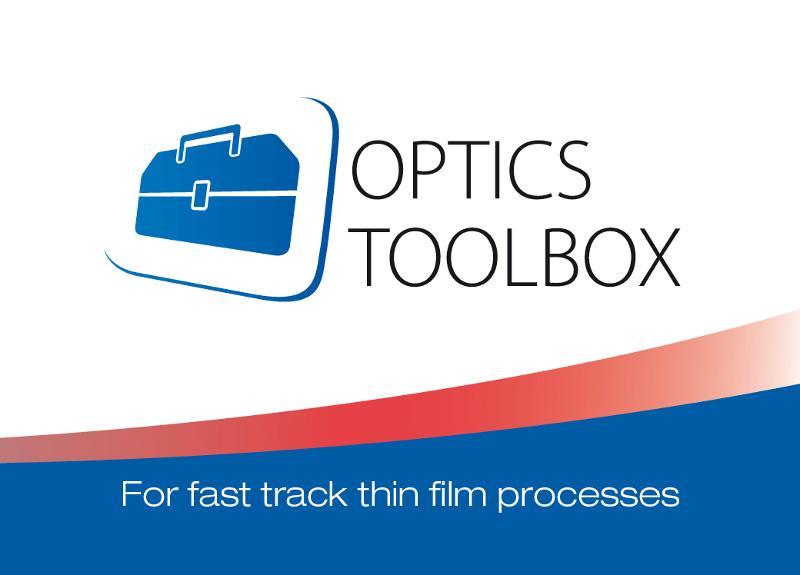
Reduce your development time, improve
your thin film process performance and cut your costs with Evatec's new "Optics
Toolbox" - Seamless integration of thin film design software, layer end point
strategy, optical monitoring, process recipe generation and execution with Khan
system and process controller on BAK Evaporator and MSP Sputter platforms.
Phone:
(603)
669-9656
www.evatecnet.com
E-Mail: infoNA@evatecnet.com
|

SVC is now on Facebook!
Become a fan today and keep track of all the up-to-the-minute
SVC news.
|

SVC Tutorial Course Offered at PSE 2010
Kongresshaus,
Garmisch-Partenkirchen, Germany
Sept. 16, 2010
SVC C-317 - The Practice of Reactive Sputtering
Instructor: Allan Matthews,
The University of Sheffield, UK
Learn More About PSE 2010
|
|
|
|
To those of us who find ourselves enjoying the tempting, warm weather of July, it is often difficult to resist the "respectable laziness" of summer; but the level of progress and innovation in our technology continues to move onward and upward to push the boundaries of our imagination. In this issue of SVConnections, you'll find a snapshot of the latest in vacuum coating technology and other discoveries in subjects of interest to all of us.
Have you missed past issues of SVConnections? All archived issues are now posted on the SVC Web Site - with all the links to the full articles available. Visit today!
|
|
All
Black Rolex Watches Revealed: First
Video to Show Top-Secret Rolex PVD 'Blackening' Process Released
Edited
by Debra Tone, June 21, 2010
LOS ANGELES, Calif. (SEND2PRESS NEWSWIRE) -- Time and Gems (www.TimeandGems.com), an independent
Rolex retailer offering 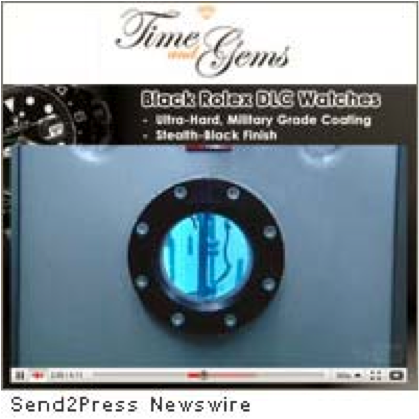 premium Rolex customizations, releases a video on their
website that shows in detail the top-secret PVD (Physical Vapor Deposition)
process that many fine Swiss watch manufacturers are using to coat stainless
steel watches with an all-black highly scratch-resistant coating. premium Rolex customizations, releases a video on their
website that shows in detail the top-secret PVD (Physical Vapor Deposition)
process that many fine Swiss watch manufacturers are using to coat stainless
steel watches with an all-black highly scratch-resistant coating.
"After launching our PVD Rolex watches in December, we
had a phenomenal response," says Jason Smith, president of Time and Gems.
"Our customers would often ask how we did it and whether the PVD coating
was really better than stainless steel and equal in quality to the Rolex watches
we were coating. The video really answers all their questions and more, showing
our first-class attention to detail and why we're the online leader in
pre-owned Rolex."
The PVD process not only transforms the look of stainless
steel watches, but also surpasses stainless steel in terms of toughness. The
PVD process occurs in a vacuum chamber, at Time and Gems' multi-million dollar
coating facility, interpenetrating the steel with a DLC (Diamond Like Carbon)
coating and providing a chemical barrier on the watch that protects against the
elements, reduces the effects of oxidation and increases the hardness rating by
almost 20 times.
(Click the image to read the entire article on www.send2press.com)
Image: www.send2press.com
|
|
PVD Coatings for Medical Device Applications
By Mark Pellman, Multi-Arc, Inc. Rockaway, NJ
Since it was introduced to the medical
device industry in the late 1980s, physical vapor deposition (PVD) has become
widely used to deposit w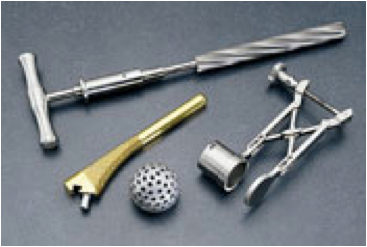 ear-resistant thin-film coatings on a variety of
medical devices, including orthopedic implants, pacemakers, surgical
instruments, orthodontic appliances and dental instruments. The value of PVD
technology rests in its ability to modify the surface properties of a device
without changing the underlying material properties and biomechanical
functionality. ear-resistant thin-film coatings on a variety of
medical devices, including orthopedic implants, pacemakers, surgical
instruments, orthodontic appliances and dental instruments. The value of PVD
technology rests in its ability to modify the surface properties of a device
without changing the underlying material properties and biomechanical
functionality.
PVD Coating Properties
and Medical Devices
PVD coatings provide a number of benefits to medical devices in addition to
hardness and adhesion. The most significant are listed in Table I. The
biocompatibility of a coating is a prerequisite to its use on medical devices.
For this reason, Multi-Arc has tested the biocompatibility of all the coatings
that it applies, with the exception of TiN, which has been widely reported to
be biocompatible.
Coatings are certified biocompatible based
on a series of tests conducted by an independent biological-testing laboratory.
These tests were conducted in accordance with ISO 10993-1 guidelines for
materials that experience short-term body contact. The results indicate that TiN,
ZrN, CrN, TiAlN, AlTiN and two Multi-Arc proprietary coatings (Blackbond and
Tetrabond) are acceptable for external and internal medical devices that
contact bone, skin tissue or blood.
(Click
the image to read the full article on www.pfonline.com) Image: PF Online
|
CSIRO to Build Largest Waterless Brayton Cycle
Solar Power Tower
The CSIRO (Commonwealth Scientific and Industrial Research Organisation) will be building the largest 30 m high
solar 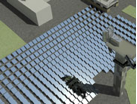 power tower with a Brayton Cycle Turbine on the top. The uniqueness is
that this turbine uses superheated compressed air as its energy transfer
medium. Sunlight is focused using 450 mirrored heliostats. Water is not necessary for operation, which makes the technology useful in
very arid climates. The plant covers an area of 4,000 sq. m and can operate at
above 900˚C. The field is expected to be fully operational by March 2011. $5
million in funding was provided by the Australian Solar Institute (ASI)-part of
the Australian Government Initiative. power tower with a Brayton Cycle Turbine on the top. The uniqueness is
that this turbine uses superheated compressed air as its energy transfer
medium. Sunlight is focused using 450 mirrored heliostats. Water is not necessary for operation, which makes the technology useful in
very arid climates. The plant covers an area of 4,000 sq. m and can operate at
above 900˚C. The field is expected to be fully operational by March 2011. $5
million in funding was provided by the Australian Solar Institute (ASI)-part of
the Australian Government Initiative.
|
|
The Visually Impaired Can Taste Light
Neuroscientists at Wicab, based in Wisconsin,
have a device that partially restores the experience of seeing by using the
tongue and camera system together as a substitute for the eye. The device, BrainPort, gathers visual
data with a small video camera mounted on sunglasses worn by user. The data goes to handheld base unit,
which converts digital signals into electrical pulses. The gentle electrical patterns are sent
to the tongue via a "lollipop", an  electrode array around nine centimeters
square. The tongue is an ideal
sensor because of its sensitive and densely packed nerve fibers. The tongue feels tingle patterns
showing the texture of light and colors.
Patients typically need only 15 minutes to begin interpreting
Brainport's spatial information.
Wicab's video shows a patient successfully ascending a climbing wall on his
own. In the UK, Brainport is
funded jointly by the Ministry of Defense and St. Dunstan's, the charity for
blind ex-service personnel. Wicab will
submit it to the U.S. Food and Drug Administration for approval. The cost of the technology is about
$10,000 a unit. electrode array around nine centimeters
square. The tongue is an ideal
sensor because of its sensitive and densely packed nerve fibers. The tongue feels tingle patterns
showing the texture of light and colors.
Patients typically need only 15 minutes to begin interpreting
Brainport's spatial information.
Wicab's video shows a patient successfully ascending a climbing wall on his
own. In the UK, Brainport is
funded jointly by the Ministry of Defense and St. Dunstan's, the charity for
blind ex-service personnel. Wicab will
submit it to the U.S. Food and Drug Administration for approval. The cost of the technology is about
$10,000 a unit.
Wicab's link with video: http://vision.wicab.com/index.php A U.K. soldier trying Brainport: Image: Mirror News [UK], Amanda Killelea
|
|
LEDs: The Next Fabrication Wave
With the saturation of semiconductor fabrication
lines and the slowing of the solar markets, the next big thing is LED
fabrication plants. We are seeing rising demand for LEDs coming from lighting,
TV and electronic backlight applications. The Semiconductor Manufacturing Organization
(SEMI) has tracked 91 fabs and 89 optoelectronics fabs worldwide. Large
companies like Samsung and Taiwan Semiconductor Manufacturing (TSMC) are moving
into this area. Samsung will be installing 50 MOCVD new deposition systems to
make a total of 150 by year-end. New lines are expected in China, Taiwan,
Japan, India, Russia and India. The lead in the industry is Nichia of Japan,
announcing a quadrupling of their LED production. TSMC in Taiwan has announced
a lighting manufacturing line, which will have 10-12 MOCVD reactors. Equipment
makers Veeco and Aixtron have seen an upturn in orders. The estimated worldwide
spending on LED fabs in 2010 is $945 million with $60 million in North America,
according to SEMI. SEMI has recommended that the US government provide $20 million
for US manufacturing improvements for solid-state lighting through the American
Recovery and Reinvestment Act.
Link to EETimes article
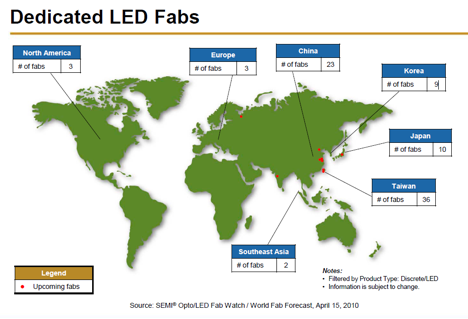
|
|
Future 10-Year Trends in the Converting Industry
The PFFC
(Paper, Film & Foil Converter) magazine looked at the past and
future trends for the next 10 years in the converting industry. Future trends
are predicted to be: low cost alternative energy sources, new processes to
minimize environmental contaminates, and new raw materials based on renewable
resources - not petroleum.
Other trends are automated coater lines, new
technologies for low or solvent free coatings and low energy drying systems, and
the use of "Cloud Computing" software systems. Cloud Computing is
Internet-based computing, where shared software and information are provided to
computers and other devices on-demand as needed.
The full article is at PFFC:
|
|
Critical 2009 Trends for the Converting Industry Reported
PFFC (Paper, Film & Foil Converter) has
reported industry market trends from the converting industry from 246 companies.
The converting industry includes flexible packaging, tape and labels, rolls and
sheets, and paperboard packaging. About 66% of the respondents said their
industry is on an up-turn in orders and inquiry activity has increased with
past-due receivables improving.
Imported converted products from mainly
China (92.3%) have affected about 37% of the respondents 2009 profit margin for
their business. Materials costs have increased by about 6.7% compared to 2008.
Plant capacity utilization has remained stable at 70% in 2009.
Expanding into
new product lines is still considered to be the best investment. 27% of the
respondents said that they have increased their R&D budget.
PFFC, May 2010, pgs 26-29 in print.
Emedia: http://digital-edition.pffc-online.com/?iid=2e5bd32d pgs. 29-32
|
|
Glass-Ceramic Covers for Highly Efficient Solar Cells
 Ralf B. Wehrspohn is the founder and head of the "SiLi-nano" research initiative at the Martin-Luther-University (MLU) of Halle-Wittenberg,
Germany. "SiLi-nano" stands for "Silicon and
Light: from macro to nano". SiLi-nano is used in the cover technology for silicon
photonics and photovoltaics. Conventional single bandgap
solar cell wastes much of UV and IR solar energy.By using fluorescent downshifting compositions, the
absorption of high-energy photons in the UV and the subsequent emission of a
photon with lower energy can be absorbed more efficiently by a solar cell.
Frequency 'downshifters,' such as fluorescent glasses and glass ceramics doped
with rare-earth ions can convert the high-energy part of the solar spectrum
into photons in the visible spectral range. Ralf B. Wehrspohn is the founder and head of the "SiLi-nano" research initiative at the Martin-Luther-University (MLU) of Halle-Wittenberg,
Germany. "SiLi-nano" stands for "Silicon and
Light: from macro to nano". SiLi-nano is used in the cover technology for silicon
photonics and photovoltaics. Conventional single bandgap
solar cell wastes much of UV and IR solar energy.By using fluorescent downshifting compositions, the
absorption of high-energy photons in the UV and the subsequent emission of a
photon with lower energy can be absorbed more efficiently by a solar cell.
Frequency 'downshifters,' such as fluorescent glasses and glass ceramics doped
with rare-earth ions can convert the high-energy part of the solar spectrum
into photons in the visible spectral range.
Researchers at SiLi-nano are using, divalent europium,
Eu2+, as the frequency 'downshifter to convert the high energy part
of the solar spectrum into photons in the visible spectral range.
Further information is at: http://spie.org/x40453.xml?highlight=x2358&ArticleID=x40453
SiLi-nano website: http://www.sili-nano.de/cms/home.html
Image: Sili-nano
|
|
DOE 'GATEWAY' Program Tests LED Street Lights on a Wide Scale
The U.S. Department of Energy (US DOE), Energy
Efficiency & Renewable Energy, estimates that by converting over 34 million
streetlights to LED lighting over the US, we could save more than $750 million
a year in energy costs. The US
government, regional governments, and LED manufacturers are working in partnership
to make this happen. The risk is that rapid expansion in LED manufacturing all
over the world may result in poor quality products tainting LED's benefits, as
noticed when CFL lights were first introduced.
The DOE GATEWAY program is a collaboration with
municipalities to test LED lighting products and provide feedback to
municipalities and manufacturers.
Several cities have performed market-based, real testing of LED lighting
on city-owned property. In San Francisco's Sunset District, four manufacturers'
LED street lights were installed on four public avenues to replace 100-watt
nominal high-pressure sodium lamps.
Seattle, WA was chosen to lead the DOE-supported consortium dedicated to
testing efficiency and effectiveness of LED lighting for public use. Edward Smalley is Seattle City Light
manager and director of the consortium.
He stated "The goal of the consortium is to reduce needless
duplication, reduce mistakes on a large-scale, bring end-users up to scale and
identify good products, and provide information in a timely way." Seattle
City Light must recruit at least 50 other communities to join the consortium
and share their experiences through national, regional meetings and web-based
discussions. Pacific Northwest
National Labs will administer the consortium. LED manufacturers actively support the testing effort. For example, Cree LED
CityŽ program in Raleigh, NC conducted nearly 40 separate LED projects around
the city in various lighting situations with three-fold increase in positive
reactions. Other cities involved
in the LED City program include Los Angeles, CA, and Fairview, TX, which won
several design awards for its installation. Also, Dialight plans to test LED street lights in Pittsburgh
and Edinburgh, PA, which communicate wirelessly allowing the city to remotely
dim or control clusters of lights. 
Further information is at: http://spie.org/x40709.xml?highlight=x2408&ArticleID=x40709
DOE Municipal Solid-State Street Lighting Consortium at: http://www1.eere.energy.gov/buildings/ssl/consortium.html
Cree LEDCity Program at: http://www.ledcity.org/
Pacific Northwest National Lab (PNNW)
Demonstration Assessment of LED
Street Lighting Report (PDF) at: http://www.pnl.gov/main/publications/external/technical_reports/PNNL-18947.pdf
|
|
NanoEngineers Print and Test Chemical Sensors on Underwear (w/Video)
From PhysOrg.com, June
17, 2010
Chemical sensors
printed directly on elastic underwear waistbands retained their sensing
abilities even after engineers stretched, 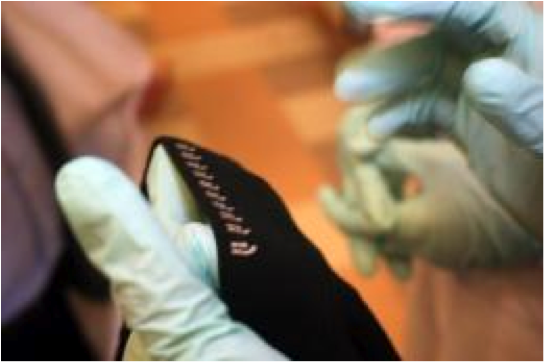 folded and pulled at the
chemical-sensing printable electrodes - sensors that could one day be
incorporated into intelligent "hospital-on-a-chip" systems. This work, funded
by the U.S. Office of Naval Research, is led by professor Joseph Wang, from the
Department of NanoEngineering at the University of California, San Diego Jacobs
School of Engineering. folded and pulled at the
chemical-sensing printable electrodes - sensors that could one day be
incorporated into intelligent "hospital-on-a-chip" systems. This work, funded
by the U.S. Office of Naval Research, is led by professor Joseph Wang, from the
Department of NanoEngineering at the University of California, San Diego Jacobs
School of Engineering.
Click the image to link to the article and video on www.PhysOrg.com
Photo
credit: UC San Diego / Daniel Kane
|
|
Many Technologies of the 21st Century are Vulnerable to Solar Storms
From Tony Philips, science.nasa.gov, June 4, 2010
Earth and space are about to come into contact in
a way that's new to human history. To make preparations, authorities in
Washington DC are holding a meeting: The Space Weather Enterprise Forum at the
National Press Club on June 8th.
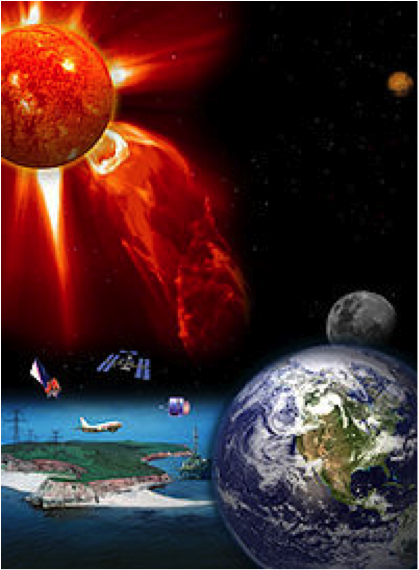 Richard Fisher, head of NASA's Heliophysics
Division, explains what it's all about: "The sun is waking up from a deep
slumber, and in the next few years we expect to see much higher levels of solar
activity. At the same time, our technological society has developed an
unprecedented sensitivity to solar storms. The intersection of these two issues
is what we're getting together to discuss." The National Academy of
Sciences framed the problem two years ago in a landmark report entitled
"Severe Space Weather Events-Societal and Economic Impacts." It noted
how people of the 21st-century rely on high-tech systems for the basics of
daily life. Smart power grids, GPS navigation, air travel, financial services
and emergency radio communications can all be knocked out by intense solar
activity. A century-class solar storm, the Academy warned, could cause twenty
times more economic damage than Hurricane Katrina. Richard Fisher, head of NASA's Heliophysics
Division, explains what it's all about: "The sun is waking up from a deep
slumber, and in the next few years we expect to see much higher levels of solar
activity. At the same time, our technological society has developed an
unprecedented sensitivity to solar storms. The intersection of these two issues
is what we're getting together to discuss." The National Academy of
Sciences framed the problem two years ago in a landmark report entitled
"Severe Space Weather Events-Societal and Economic Impacts." It noted
how people of the 21st-century rely on high-tech systems for the basics of
daily life. Smart power grids, GPS navigation, air travel, financial services
and emergency radio communications can all be knocked out by intense solar
activity. A century-class solar storm, the Academy warned, could cause twenty
times more economic damage than Hurricane Katrina.
Click the image to link to the article on www.science.nasa.gov
Photo
credit: NASA
|
|
Want More Jobs? Fix the Broken Patent System
By David Goldman, Staff Writer, CNNMoney.com, June 21, 2010
NEW YORK (CNNMoney.com) -- After decades of
inaction, lawmakers are finally closing in on a sweeping overhaul of America's
antiquated, underfunded and extremely broken patent process. The popular move
could help spur much-needed innovation and job creation -- but first, it has to
get through a Senate logjam.
The Senate Judiciary Committee passed a bill in
April that would patch a litany of problems with the patent system, which
hasn't had a major reform in more than five decades. Two months later, the measure
still has no timetable for the Senate-wide vote needed to move it through
Congress.
"I don't know why this hasn't gotten floor
time," Senate Judiciary Committee Chairman Patrick Leahy, D-Vt., said in a
recent interview. "This has nothing to do with ideology. We need an
updated patent system to create and protect jobs, and it wouldn't add a penny
to the deficit." Leahy noted that the bill has three Republican
co-signers, along with three Democrats. As a result, he predicted that once it
gets floor time, the bill could get passed in just three days -- a blink of an
eye compared to the marathon sessions it took to get stimulus, health care and
financial reform passed.
The House has two similar bills under consideration,
though its versions aren't as far along as the Senate's. If the Senate bill
gets passed, it would likely make its way through the House fairly quickly,
Leahy said.
But with patent reform, nothing is ever that
simple. House Judiciary Committee Chairman John Conyers, D-Mich., has said he
has concerns about some aspects of the Senate bill. The differences would have
to be hammered out by the two chambers.
(Click here to read the full article on cnnmoney.com)
|
|
Interested in Sharing the Latest News in Vacuum Coating Technology?

Interested
in sharing the latest
news in vacuum coating technology? Forward us a link to an article you
want to share with the rest of the SVC readership to publications@svc.org.
Purchase advertising space on this
newsletter by contacting SVC at svcinfo@svc.org.
|
|
Society of Vacuum Coaters 71 Pinon Hill Place, NE
Albuquerque, NM 87122
(505) 856-7188 Fax (505) 856-6716
www.svc.org E-mail: svcinfo@svc.org
|
|
|